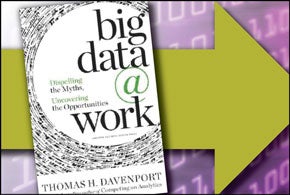
10 Things That Smart Data-Analytics Teams Do
 What Smart Data Teams Do: Enriched Perspectives
What Smart Data Teams Do: Enriched Perspectives
They integrate external data with internal data to conduct high-value analysis of the business environment.
 What Smart Data Teams Do: Market Watch
What Smart Data Teams Do: Market Watch
They recognize which data opportunities present the biggest potential value, especially in terms of competitive distinction.
 What Smart Data Teams Do: Migration Effort
What Smart Data Teams Do: Migration Effort
They constantly explore new ways to use cloud computing to process data and conduct analytics.
 What Smart Data Teams Do: Visual Learners, Part I
What Smart Data Teams Do: Visual Learners, Part I
They’re always looking for new tools to collect and assess unstructured data which materializes as text, video and images.
 What Smart Data Teams Do: Visual Learners, Part II
What Smart Data Teams Do: Visual Learners, Part II
They’re adept at deploying data visualization to further lend understanding and appreciation of the potential for big data to drive business decisions.
 What Smart Data Teams Do: Proper Alignment
What Smart Data Teams Do: Proper Alignment
They maintain consistent definitions and standards for all data used for analysis.
 What Smart Data Teams Do: Due Diligence
What Smart Data Teams Do: Due Diligence
They perform rigorous vetting to ensure the integrity of the data, so users, decision-makers and product developers enterprise-wide trust it.
 What Smart Data Teams Do: In the Loop
What Smart Data Teams Do: In the Loop
They collaborate extensively with channel partners, customers and other members of their business circles to share big data content and applications.
 What Smart Data Teams Do: Class Session
What Smart Data Teams Do: Class Session
They are eager to help the entire organization develop data science and analytics skills—from the front lines to the C-suite—to maximize the value of data.
 What Smart Data Teams Do: Trusted Parties
What Smart Data Teams Do: Trusted Parties
Because of these and other efforts, they are considered by the C-suite as key consultants for important data-driven business decisions and IT innovation investments.